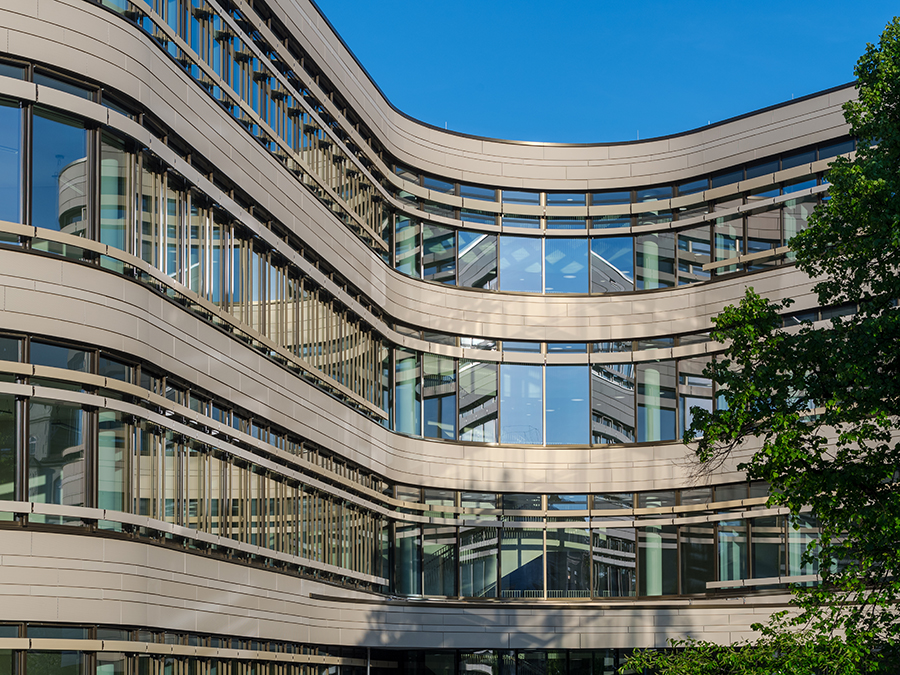Opening of the interdisciplinary cancer research center TranslaTUM
Technology meets medicine: New perspectives on cancer research

Around 480,000 people are diagnosed with cancer each year in Germany. Tumor diseases are also the second most common cause of death after cardiovascular diseases nationwide. New diagnostic and treatment solutions are therefore required quickly and urgently. TUM is adopting a broad-based, interdisciplinary approach where engineering plays a key role.
It is not only basic research that is conducted at TranslaTUM: the new discoveries are intended to be quickly transferred to clinical practice to benefit patients. This process – the translation – thus appears in the Center’s name. It is also facilitated by its geographical proximity to TUM’s university hospital rechts der Isar. This will enable doctors to feed their experiences on individual disease development directly into the new research strategies and to clinically apply the results.
Collaboration at all levels
The Center’s core concept is interdisciplinary exchange and team-based research across specialist boundaries. Problems with diagnostics and treatment will be tackled from various perspectives at the new Center. The researchers working at TranslaTUM will contribute expertise and research experience from the fields of medicine, engineering, electrical and computer engineering, informatics and the natural sciences.
“The tremendous progress being made by digitalization technologies is opening up unimagined prospects for patients. However, they can only be achieved through collaboration between medicine and engineering. TranslaTUM not only gathers the various departments under one roof, but also embraces the different scientific cultures. This entails a certain element of risk, yet we must be bold if we are to shape the future of cancer medicine,” says TUM President Professor Wolfgang A. Herrmann.
Focusing on tumor research and imaging
TranslaTUM researchers will focus on tumor diseases of the bone marrow and digestive tract in particular. Adopting a teamwork-based approach, they will explore what goes wrong with recognizing and sending molecular signals in tumor cells and the impact cancercells and our immune system have on one another. This will enable characteristics that distinguish cancer cells from healthy tissue to be identified. This knowledge will then be fed directly into the development of new imaging and analysis methods. Highly sensitive techniques will be developed that not only display the size and appearance of malignant tumors but also depict processes, such as the division and death of cells in living beings with great precision. Through collaboration the various teams will seek to find new target structures for diagnostics and treatment.
The School of Medicine has been heavily involved in the research strategy right down to the construction of the building. Its dean, Professor Peter Henningsen, sees TranslaTUM as a huge opportunity: “Experienced and highly capable doctors/clinicians will work alongside outstanding scientists at TranslaTUM. Combined with the technical disciplines, they will form a future-oriented triumvirate that is unique in Germany.”
Open-plan rooms and short distances to ensure successful cooperation
5,600 m2 distributed across six floors will provide space for 16 interdisciplinary research groups in future. The building – which was designed and planned by the doranth post architectural studio – has created an open environment. In addition to the laboratory and research areas of the individual groups, open communication zones and shared infrastructure foster exchange and day-to-day collaboration. Large equipment is housed in core facilities. These systems are managed by specialist technicians and can be used by all the groups. The Free Federal State of Bavaria and the German Federal Ministry for Education and Research funded the building.
“TranslaTUM aims to establish a creative, stimulating environment where new ideas can be developed even over a cup of coffee. Together with state-of-the-art infrastructure, it provides everything required for an effective means of combatting cancer,” explained Professor Markus Schwaiger, Founding Director of the Center and Medical Director of the TUM University Hospital.
TranslaTUM is a key part of the “Munich School of BioEngineering” (founded 2015) of the overall concept of the TUM where medicine, the natural sciences and engineering interconnect in many ways. “The TUM is the only institution in Germany where this strategy could be implemented due to its comprehensive and differentiated range of specialist disciplines,” explains President Professor Wolfgang A. Herrmann.
Download high resolution pictures
https://mediatum.ub.tum.de/1381869
Further information
Technical University of Munich
Corporate Communications Center
- Dr. Vera Siegler / Paul Hellmich
- vera.siegler@tum.de
- presse@tum.de
- Teamwebsite